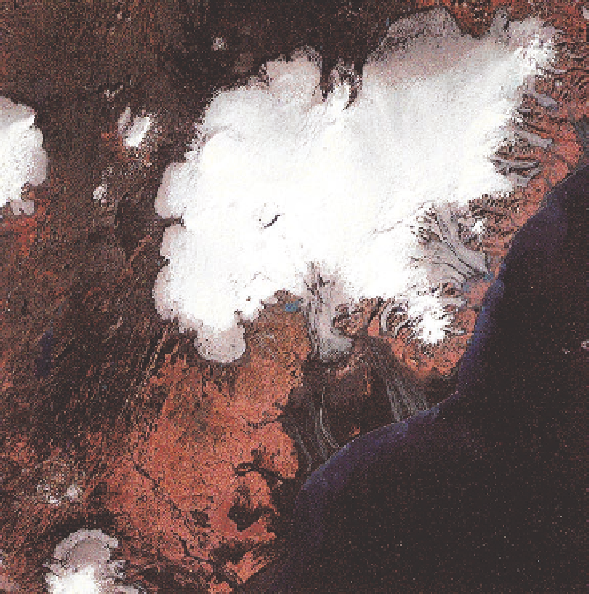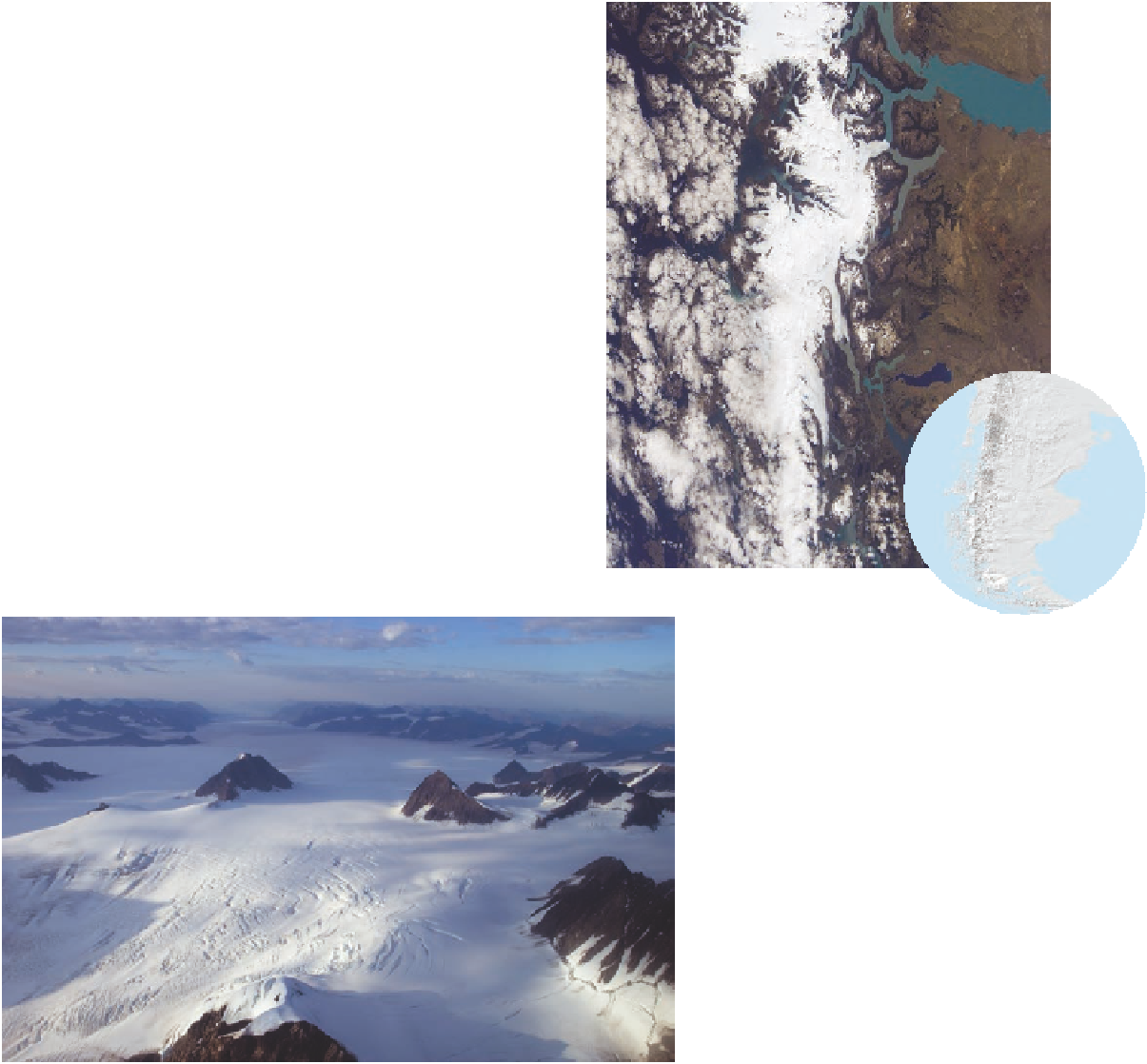Geoscience Reference
In-Depth Information
CHILE
45° S
Pacific
Ocean
ARGENTINA
Atlantic
Ocean
Patagonia
ice field
50° S
(a)
70° W
(b)
Figure 17.8 Ice caps and ice fields.
(a) The
Vatnajökull ice cap in southeastern Iceland.
(b) The Patagonia ice field in the Andes
Mountains of southern Chile. This long ice
mass has numerous glaciers flowing out of it.
(c) Nunataks rise above the ice in the Columbia
ice field in Alaska. This ice field feeds the
Columbia glacier, which flows downslope to
the left.
(c)
Such glaciers occur in many mountain ranges around the world,
including the Southern Alps of New Zealand, the Swiss Alps in
Europe, the Canadian Rockies, the Himalayan Mountains, and
the Andes Mountains in South America. Several alpine glaciers
occur in the United States, with the majority in Washington and
Alaska (Figure 17.9). For example, the Columbia ice field pic-
tured in Figure 17.8c is the source for eight such glaciers, includ-
ing the Athabasca and Columbia, to name two.
In areas where such glaciers flow in steep-sided valleys,
they are called
valley glaciers
(Figure 17.10) because they
occupy landscapes originally carved by streams. If a valley
glacier extends entirely out of a valley into the lowland be-
yond the mountain front, it is called a
piedmont glacier
. Some
valley glaciers even terminate at the ocean. These glaciers are
called
tidewater glaciers
and are particularly common along
the coast of Alaska. Such landscapes are attractive tourist des-
tinations because they mark a beautiful interaction of ice and
ocean. One of the particularly interesting aspects of tidewater
glaciers is that large blocks of ice break off the front of the
glacier in a process called
calving.
The calved blocks then fall






















































